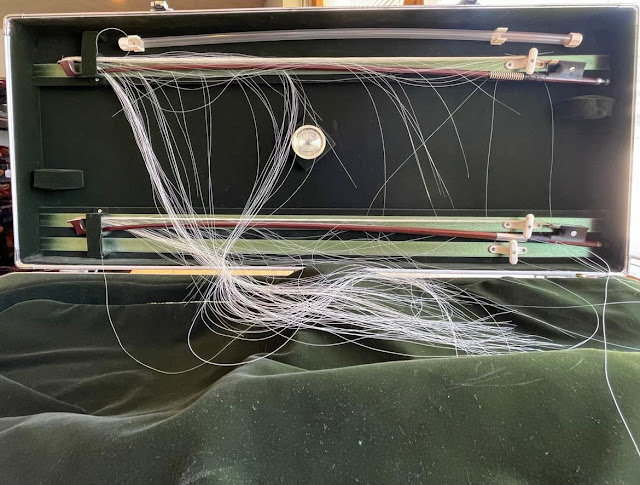Old time folk music and bluegrass music share many of the same tunes, but there is actually a big difference between the two types of music. I teach both styles here at The Bluegrass Shack, but many times, one style of music is better suited for an individual than another. So what's the difference? Why would you want to play one genre over another?
Both types of music basically come from the same background. I've already said they share many of the same tunes. Two of the biggest differences are: 1) the complexity of the music; and 2) how it is played within a group.
The easiest way to spot whether you are watching an old time folk jam or a bluegrass jam is to see how people are playing the music together. In an old time jam, everyone plays melody all at the same time. Many times, people all sing the melody together at the same time as well. There may be a little bit of difference in the actual instruments that play. For instance, you are more likely to see a dulcimer in a folk jam than you are in a bluegrass jam. A dulcimer just isn't typically a bluegrass instrument. And for old time music, you do not need to know how to play backup unless you are the guitar or bass player.
In a bluegrass jam, everyone takes turns playing the melody, and when you aren't playing the melody, you are expected to play something different called backup. This requires you to know the chords to a song and to be able to keep rhythm with the chords while someone else plays the melody. Only one person sings the melody (lead) at a time, though others may join in on the chorus to sing harmony. If you are in a bluegrass jam and you play the melody along with someone else, you are likely to be seen as rude. You are, in essence, stealing someone else's turn to play lead. If you sing or play melody behind the singer while the singer is singing, you are also seen as being rude.
Old time music is generally simpler in form than bluegrass. This doesn't mean that old time music can't be complex, or that bluegrass music is always more complicated. It is just a generalization. What the instruments play is also slightly different. Old time banjo is almost always a type of frailing or clawhammer more typical of Grandpa Jones, whereas bluegrass music generally utilizes a three-finger style more typical of Earl Scruggs. The fiddle in old time music doesn't shift positions as much (move the left hand from the scroll position up the fingerboard), and variations to tunes are usually less and simpler. A bluegrass fiddler will shift positions more often, even using shifted double stops (two notes played at the same time). These are just a few of the differences in two instruments, but there are more that I won't be going into right now.
So how do you know what type of music you might want to pursue if you like songs like Soldier's Joy, I'll Fly Away, Arkansas Traveller and Will the Circle Be Unbroken? Folk music can be a great way to get a start on either genre. Why? Because you can play it with other people at the same time. It makes learning to play with and in front of others easier than bluegrass because everyone is doing it at the same time. You are not singled out to play the melody, and you don't have to know how to do backup. If you decide later you need more of a challenge or that you would like to have the opportunity to "strut your stuff," you can always shift more towards bluegrass. If only one type of music is prevalent in your area, go with it! You can always modify later.
Don't wait and don't think it's too late to start! I have taught folks of all different ages and abilities, and it is WAY more about how much you want it than it is natural talent. I think you'll find both of these styles of music a great way to meet people, and great way to learn new skills, and a TON of fun!



